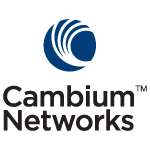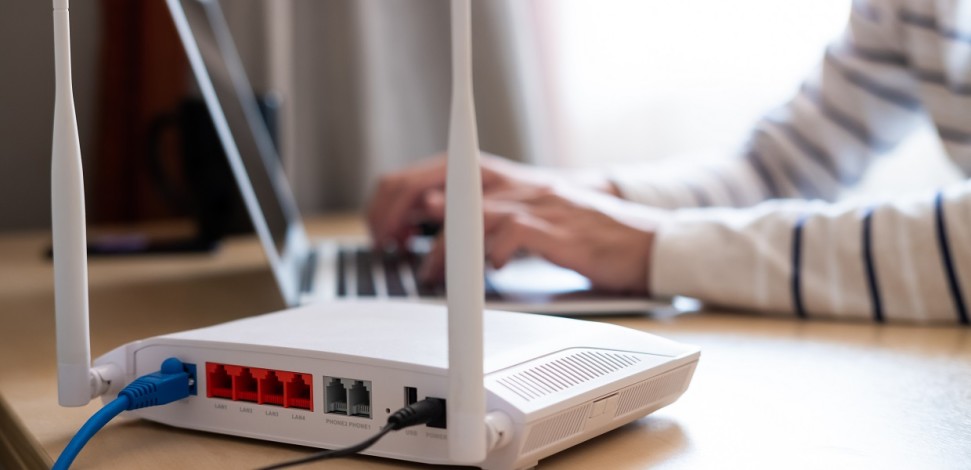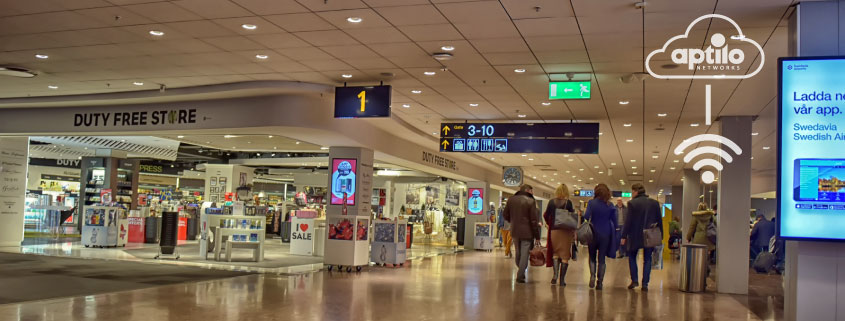Wi-Fi inherent strengths and extensive portfolio drive its leading role in IoT
Austin, TX – July 14, 2022 – Global ubiquity and prominence in delivering the internet make Wi-Fi® an obvious choice for connecting Internet of Things (IoT) devices in both residential and industrial environments. Wi-Fi is uniquely suited to support IoT products and applications with its wide-ranging capabilities and proliferation as a global standard. Wi-Fi will play a role in almost every IoT environment, either alone or alongside more specialized protocols or technologies.
“Wi-Fi has been delivering the “internet” in Internet of Things to more applications, more use cases, and more environments than any other IoT technology option,” said Edgar Figueroa, president and CEO, Wi-Fi Alliance®. “The IoT is meant to enrich people’s lives, and Wi-Fi CERTIFIED solutions deliver the quality, reliability, and security that enable the IoT’s full potential.”
“Wi-Fi addresses the needs of various device types and use cases in the IoT market,” said Phil Solis, research director, IDC. “Wi-Fi can deliver a wide range of data rates and ranges at varying price points because there are an abundance of Wi-Fi chips supporting different levels of complexity and several unlicensed spectrum bands from sub-1 GHz to 6 GHz. It is this diversity in chips designs that allow Wi-Fi to meet the broadest array of IoT product and network requirements.”
Wi-Fi Alliance outlines eight Wi-Fi competencies that should be considered when selecting an IoT technology:
- Standards-based, interoperable technology: The promise of IoT is founded on a wide range of device manufacturers. Wi-Fi provides a common platform to deliver a growing range of IoT applications that vary in performance, power, and latency requirements. Wi-Fi CERTIFIED™ delivers confidence that billions of devices will interoperate and provide a quality user experience regardless of product brand.
- Pervasive connectivity: IoT systems are often controlled through mobile devices, and Wi-Fi allows seamless control of smartphones, tablets, and 18 billion Wi-Fi devices already in use today to help unlock the full potential of the IoT. Pervasive global connectivity empowers users and network operators to connect and control a unified system.
- Proven WPA3™ security: Sensitive government, industrial, and personal information is exchanged through IoT applications. Wi-Fi delivers proven, WPA3™ security to protect information exchanged in personal and enterprise environments. Choosing Wi-Fi CERTIFIED IoT devices ensures data is protected with the latest, enterprise-grade security protocols.
- Cost effective, simple deployment: Wi-Fi is an easy-to-deploy and cost-effective foundation that requires no separate gateways or specialized skills to deliver IoT applications. Wi-Fi is relied on and deployed by users worldwide every day, and continues to evolve to simplify device pairing, network authentication, and more.
- Backward compatibility: Wi-Fi is a smart investment for IoT product architects who consider cost, reliability, and support in future-proofing their technology investment. Wi-Fi will stand the test of time which minimizes the risk of premature obsolescence and ensures legacy devices can easily connect to home networks.
- Location awareness: Wi-Fi Location™ delivers sub-meter-level location information that allows a range of location-aware IoT services for industrial and smart city environments, enabling enhanced benefits such as asset management, network management, and geo-fencing.
- Reliable, sophisticated connectivity: Home and industrial IoT networks require consistent and reliable connectivity. Wi-Fi 6 networks deliver sophisticated network efficiency, diagnostics, management, and optimization capabilities. Wi-Fi 6 and Wi-Fi 6E handle many simultaneously connected devices and heavy data throughput while delivering high performance and low latencies for applications including 4K video streaming and AR/VR. Wi-Fi 6 and Wi-Fi 6E also allows devices, such as manufacturing robots, and drones, to remain connected even as they move or “roam” throughout home or industrial networks.
- Flexible network topology: In addition to a traditional Wi-Fi connection through access points, Wi-Fi CERTIFIED EasyMesh™, Wi-Fi CERTIFIED Wi-Fi Aware™, and Wi-Fi CERTIFIED Wi-Fi Direct® offer a variety of network topologies to different IoT environments for scalable and customizable options to meet IoT network and IoT application needs. Wi-Fi offers more flexible topology options to network managers for IoT network connections than solely star or mesh topologies.
The role of Wi-Fi CERTIFIED™
Wi-Fi’s extensive portfolio addresses IoT use cases that support high throughput and low latency applications, such as AR/VR, and long range, low power requirements for asset tracking applications or rural irrigation systems. Wi-Fi Alliance certifications, including Wi-Fi CERTIFIED 6™, Wi-Fi CERTIFIED HaLow™, Wi-Fi CERTIFIED Easy Connect™, and Wi-Fi CERTIFIED QoS Management™ deliver capabilities to meet unique IoT requirements across residential, industrial, and other IoT environments. The enormous potential of the IoT market has resulted in devices brought to market without sufficient testing, delivering a less-than-optimal user experience. Wi-Fi CERTIFIED devices meet high quality standards for the latest security, interoperability, and a range of application-specific protocols to deliver a good experience for users and network operators.
“Wi-Fi 6 is ideal for connecting the smart home, and a notable benefit for IoT is a feature called Target Wake Time (TWT), helping ensure that client devices can save power and extend their battery life—a critical advantage for IoT devices. Wi-Fi 6 uses a combination of technologies—including OFDMA and 1024 QAM modulation—to improve spectral efficiency, boost speed and support many devices in a confined area, which is now an important consideration in the home where many appliances and other IoT devices are connected to the home hub and several users may be consuming high quality video, gaming, or AR/VR at the same time,” said Adlane Fellah, senior analyst, Maravedis Research. “Wi-Fi 6 can now also support many of the requirements for industrial use cases, with enhancements to latency, determinism and power efficiency. In a smart factory, Wi-Fi might deliver the optimal cost/performance for high bandwidth cameras that power augmented reality services and Wi-Fi HaLow might be optimal for machinery monitoring, which needs very low power and low bandwidth.”
Industry support for Wi-Fi’s IoT advantage
“Wi-Fi plays a crucial role in enabling industrial IoT use cases and helping companies achieve desired business outcomes in this important market sector. At Aruba, as part of Aruba ESP, we are working with our customers and our partner ecosystem to ensure secure, seamless IoT connectivity to enable hyper-aware facilities. By building GPS and Wi-Fi Location capabilities into our wireless technology, our wireless access points are equipped to automatically locate themselves and provide highly accurate indoor positioning — empowering wayfinding, asset tracking, and people tracking use cases in industrial IoT environments.” – Chuck Lukaszewski, VP and Wireless CTO at Aruba, a Hewlett Packard Enterprise company
“With the introduction of Smart Homes, Smart Cities, and the increase in monitoring of manufacturing facilities, Wi-Fi offers the best solution to communicate with the IoT devices that make these possible. Wi-Fi provides the range required for effective service to IoT devices while maintaining privacy and security, and it is already in use within these ecosystems. Features such as Wi-Fi Easy Connect, Wi-Fi EasyMesh and WPA3 support simple and secure deployment. Coupled with Wi-Fi 6 and Wi-Fi 6E, the increase in useable spectrum results in a longer life cycle and a more productive experience.” – Luther Smith, Distinguished Technologist and Director of Wireless at CableLabs
“Wi-Fi has been fundamental to IoT devices in residential environments, providing a foundation to power Wi-Fi devices and also provide backhaul for battery operated devices using other low power technologies. CommScope backhauls billions of IoT devices with Wi-Fi gateways, access points and extender solutions across cable, optical and fixed wireless access connected homes. With the imminent deployment of the Matter IoT solution and the incorporation of Wi-Fi as a primary protocol for connected IoT devices, we expect to see even more relevance for the specific IoT features added to 2.4 GHz Wi-Fi 2 MHz channels, which was a new Wi-Fi 6 capability added to extend the reach of Wi-Fi narrow band Smart Home solutions.” – Charles Cheevers, CTO of CommScope Home Networks
“As IoT is becoming instrumental in digital transformation, we see the possibilities that result from innovating at the intersection of Wi-Fi and IoT. Ruckus Networks enables our customers to leverage their existing wired and Wi-Fi infrastructure to deliver new IoT technologies securely and economically across enterprise and industrial markets. Specifically, the global adoption of Wi-Fi has allowed Ruckus Networks to accelerate the delivery and adoption of IoT solutions such as environmental controls, industrial automation and enhanced security to name a few examples.”– Bart Giordano, SVP and GM of Ruckus Networks, CommScope
“With the mass connections of IoT devices, Wi-Fi is evolving to deliver built-in controlling capabilities to various environments. Wi-Fi capabilities now support a wider range of products, many of which require more advanced management platforms to control and ensure the highest level of performance.” – Mr. Ashish Keshari, Senior Manager of R&D at GX Group
“Wi-Fi is everywhere; it allows direct connections to the internet and provides reliable and robust connectivity for IoT applications, which require a range of data rates, and offers a low power profile for battery-operated devices. Over the last 20 years, Wi-Fi has evolved greatly, advancing through Wi-Fi 4, 5 and now, 6 and 6E, improving performance and customer experience with each advancement. Infineon is committed to delivering high-performance Wi-Fi for industrial and consumer IoT applications.” –Sivaram Trikutam, Vice President of Wi-Fi Product Line at Infineon
“Leveraging the broad scope of Wi-Fi as a solution for IoT, including Wi-Fi 6 and the new 6GHz spectrum, our technology enables everything from low speed, long range devices in 2.4GHz to high speed, low latency devices in both 5 and 6GHz all at low power. We look forward to continuing to work alongside the Wi-Fi Alliance to further expand capabilities in the IoT space.” Rahul Patel, Senior Vice President and General Manager of Connectivity, Cloud and Networking at Qualcomm Technologies, Inc.
“As one of the most widely used IoT connectivity technologies, Wi-Fi gives a solid foundation to begin building IoT deployments. As a leader in pure-play IoT, we believe in leveraging multiple protocols like Wi-Fi, Zigbee, Thread, and more to meet the needs of our customers and Wi-Fi plays a critical role in how we integrate them together.” – said Mitch Klein, Director of Alliances Strategy at Silicon Labs, Inc.
“Wi-Fi is a ubiquitous technology that continues to create opportunities for innovation within the internet of connected things. The Wi-Fi CERTIFIED program provides interoperability assurance, which enables connectivity leaders – such as Texas Instruments – to offer reliable and secure Wi-Fi solutions for industrial and residential applications, whether that’s in smart buildings, smart grid infrastructure, or medical applications.” – Marian Kost, Vice President and General Manager of Connectivity at Texas Instruments
About Wi-Fi Alliance® | www.wi-fi.org
Wi-Fi Alliance® is the worldwide network of companies that brings you Wi-Fi®. Members of our collaboration forum come together from across the Wi-Fi ecosystem with the shared vision to connect everyone and everything, everywhere, while providing the best possible user experience. Since 2000, Wi-Fi Alliance has completed more than 70,000 Wi-Fi certifications. The Wi-Fi CERTIFIED™ seal of approval designates products with proven interoperability, backward compatibility, and the highest industry-standard security protections in place. Today, Wi-Fi carries more than half of the internet’s traffic in an ever-expanding variety of applications. Wi-Fi Alliance continues to drive the adoption and evolution of Wi-Fi, which billions of people rely on every day.



















